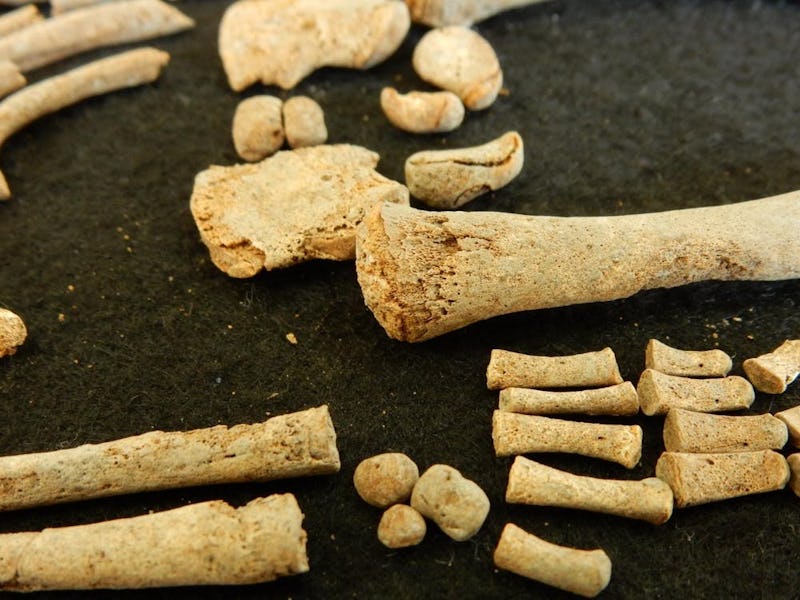Oldest-Ever Syphilis DNA Discovered in Convent Cemetery Reveals New History
'We can learn from the past in order to predict the future.'

Though syphilis is most often associated with the Middle Ages in Europe, its history extends much further into the past and extends into the present day. Now, the infectious disease affects approximately 28,000 Americans and is setting record-high infection rates in the UK. In an effort to shed light on its evolutionary history — and find some clues as to how it can be stopped — scientists recovered the oldest-ever DNA samples of the bacterium Treponema pallidum, which causes syphilis as well as the skin disease yaws. In the new paper describing their discoveries, they seem optimistic that they’ll find a way to combat the deadly disease.
“Understanding the evolution of a bacterium, its past spread and diversity, leads to a better knowledge to how this bacterium changed over time and adapted to environmental changes,” University of Zurich paleogenetics expert and study co-author Verena Schünemann, Ph.D. explains to Inverse. “This is information is important when it comes to the development of new treatments for a pathogen. In general, we can learn from the past in order to predict the future.”
Shünemann is part of the team that sequenced T. pallidum genomes, pulled from skeletal remains dated to colonial-era Mexico. In a paper published Thursday in PLOS Neglected Tropical Diseases, the team of international researchers explain why scientists used to think it was impossible to recover the bacterium’s DNA from ancient samples. Shünemann says that “even in modern patients with advanced stage syphilis, who may display bone lesions, molecular detection of the bacterium is challenging.”
Skeletal remains from individual 94A, who was infected with syphilis and 6 months old at the time of death.
The exhumed remains were excavated from the former Convent of Santa Isabel in Mexico City, a site that was operated by nuns of the Franciscan Order between 1681 and 1861. The three skeletal remains that tested positive for T. pallidum were all infants and buried around 350 years ago (the scientists note that 90 percent of the buried individuals in the cemetery are infants). The team could tell just by looking at the infants that they’d died from treponemal disease — that is, one caused by the bacteria — and subsequently, whole T. pallidum genomes were recovered from the bodies.
Two of the individuals carried a subspecies of the bacterium that causes syphilis, while one carried a different subspecies that causes yaws. Today, yaws is described by the World Health Organization as a “poverty-related chronic skin disease.” Unlike syphilis, it’s a non-venereal disease and is transmitted mainly through direct skin contact with an infected person.
Artist rendering of the Convent of Santa Isabel, where the remains were recovered.
Importantly, the scientist’s ability to distinguish which subspecies the individuals were infected with is entirely because of the genomic evidence — one wouldn’t be able to determine that just by looking at the remains. Shünemann says “our finding that two T. pallidum species likely caused similar bone lesions in the past is very exciting as we did not expect to also find the causative agent of yaws in our samples.”
The similar symptoms of the two diseases suggests that, somewhere in its long history, the bacterium’s DNA got rearranged. In a statement released Thursday, study co-author Alexander Herbig, Ph.D. explains that his team’s findings suggest that there may be “a more complex evolutionary history of T. pallidum than previously assumed.” There’s already a debate to whether syphilis originated in the so-called New World sometime in the 15th century then spread — or if it sprung up of its own accord around the same time in Europe.
Drawing of a preserved head of someone who died from syphilis.
Now that these scientists have proved that they can sequence the ancient genomes, there’s a chance that mystery can be solved.
“Ancient DNA could help to resolve this controversy by illuminating the evolutionary history of these bacteria and our study provides the foundation to make this possible,” says Shünemann. “We think that it should be possible to find T. pallidum bacteria in older samples, as we now have the molecular tool kit to look for it.”